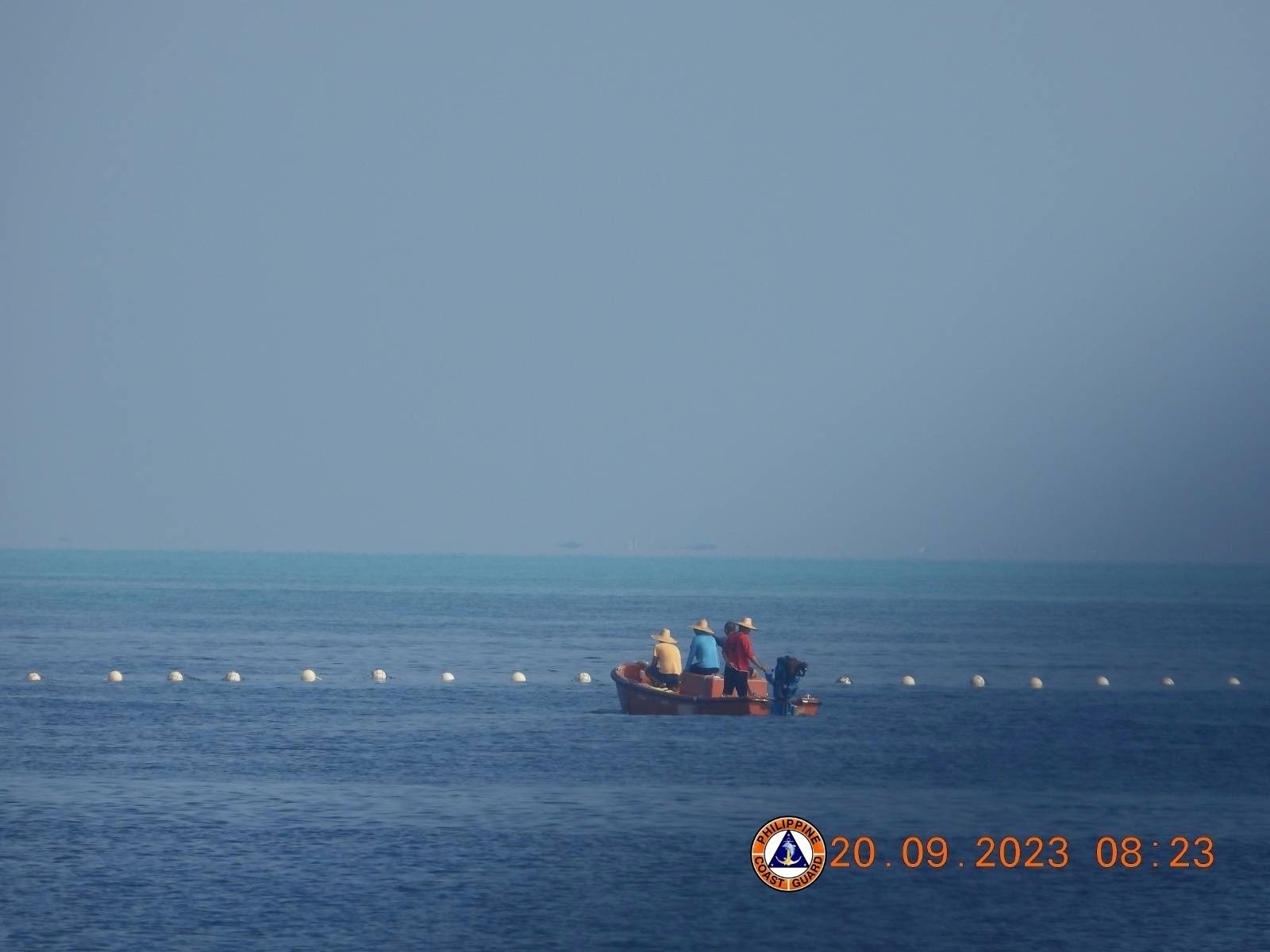PCG: China installs floating barrier in Bajo de Masinloc

China has put up a floating marker which also serves as a barrier in Bajo de Masinloc (Scarborough or Panatag Shoal) near Zambales, raising the tension once more in an area that is located within the Philippines’ 200-nautical mile exclusive economic zone (EEZ).
The Philippine Coast Guard (PCG) revealed this on Sunday, Sept. 24, as it condemned, along with the Bureau of Fisheries and Aquatic Resources (BFAR), the move since it “prevents Filipino Fishing Boats (FFBs) from entering the shoal and depriving them of their fishing and livelihood activities.”
Commodore Jay Tarriela, PCG spokesperson for West Philippine Sea (WPS), said the floating barrier has an estimated length of 300 meters and was installed at the southeast portion of Bajo de Masinloc.
It was discovered by PCG and BFAR personnel while they were conducting routine maritime patrol onboard BRP Datu Bankaw last Sept. 22.
Tarriela said three rigid hull inflatable boats (RHIBs) from the China Coast Guard (CCG) and a Chinese maritime militia (CMM) service boat installed the floating barrier in the vicinity of Bajo de Masinloc when BRP Datu Bankaw arrived.
“It was reported by the Filipino fishermen that the CCG vessels usually install floating barriers whenever they monitor a large number of Filipino fishermen in the area,” Tarriela said.
At the time of the maritime patrol, there were more than 50 Filipino fishing boats that were engaged in fishing activities in the area, Tarriela said. The BFAR distributed various grocery items and fuel subsidies to the fishermen to sustain their operations.
However, Tarriela said that four CCG vessels issued 15 radio challenges to drive away the BFAR vessel and the Filipino fishing boats.
The vessels were identified as CCG-3065, CCG-3066, CCG-3105, and CCG-3301.
“The CCG crew alleged that the presence of the BFAR vessel and Filipino fishermen violated international law and the domestic laws of the People's Republic of China (PRC). The BFAR vessel responded to each and every radio calls and emphasized that they were carrying out a routine patrol within the territorial sea of BDM,” Tarriela said.
“Notably, upon realizing the presence of media personnel onboard the BFAR vessel, the CCG vessels maintained a safe distance and moved away,” it added.
Floating markers
The installation of floating markers was initiated by the PCG in the West Philippine Sea last year to assert the country’s sovereignty and guide mariners in its tricky waters.
In May 2022, the PCG installed five 30-foot-long navigational buoys in four critical areas in the WPS: two on Pag-asa (Thitu) Island, and one each on Lawak (Nanshan) Island, Likas (West York) Island, and Parola Island (Northeast Cay).
This was followed by five more navigational buoys put up on Patag (Flat) Island, Balagtas (Irving) Reef, Kota (Loaita) Island, Panata Island (Lankiam Cay), and Julian Felipe (Whitsun) Reef – all in the Kalayaan Island Group (Spratly Islands) – from May 10 to 12, 2023.
China then imitated the PCG’s initiative as it installed three of their own markers near Balagtas Reef, Julian Felipe Reef, and Burgos (Gaven) Reef.
Bajo de Masinloc’s chain of reefs and rocks is located at approximately 124 nautical miles from the nearest coast of Luzon and approximately 472 nautical miles from the nearest coast of China.
The rocks of Bajo de Masinloc are situated north of Kalayaan Island Group (Spratlys Island), and located within the Philippines’ 200-nautical mile EEZ and 200-nautical mile continental shelf.
Originally, Bajo de Masinloc was administered by the Philippines as it was considered a part of Zambales province but in 2012, a standoff between Philippine Navy and Chinese vessels ended up with the shoal being seized by Beijing.
Commitment
Tarriela said that the PCG will remain relentless in protecting the country’s interests in Bajo de Masinloc and ensuring the safety of Filipino fishermen despite China’s installation of a floating barrier in the area.
“The PCG will continue to work closely with all concerned government agencies to address these challenges, uphold our maritime rights and protect our maritime domains,” he said.